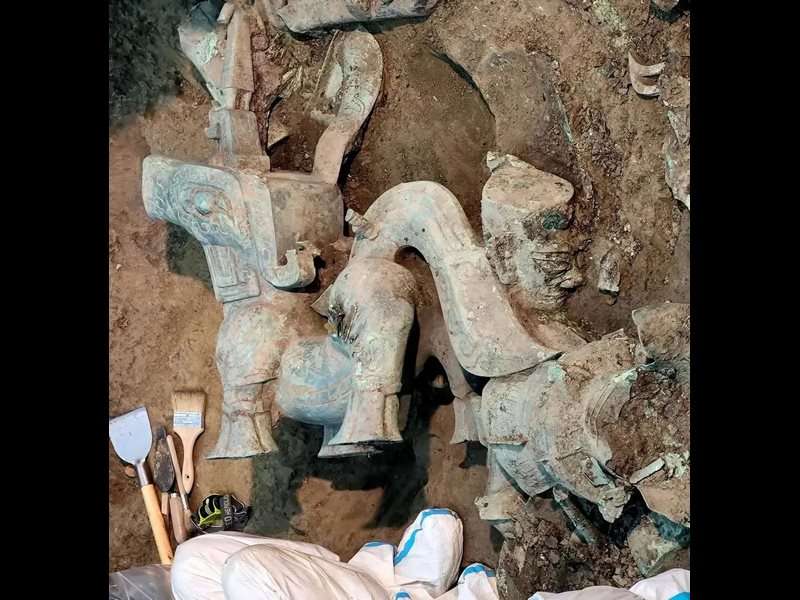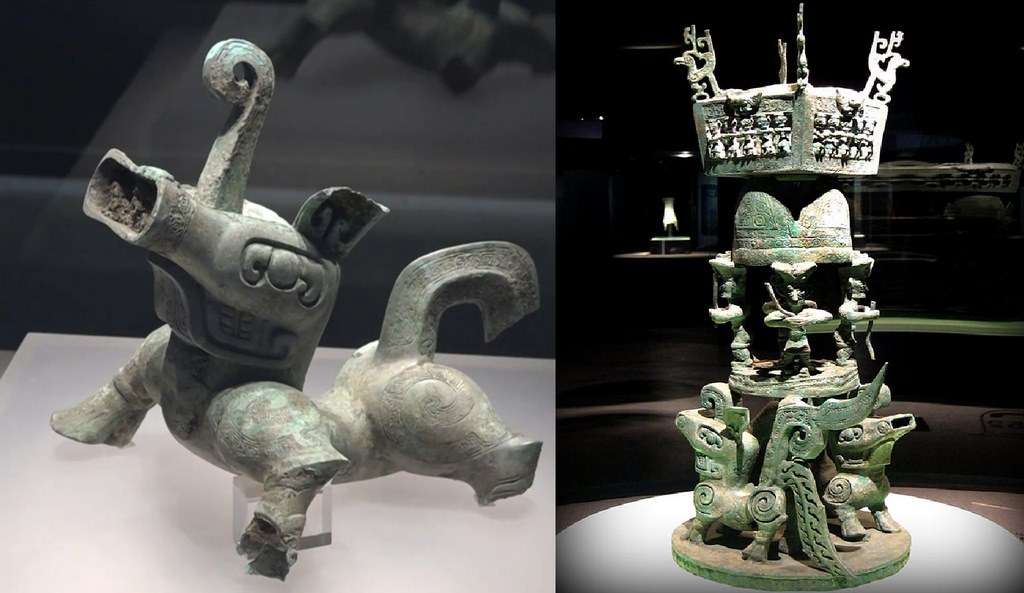World's First 100% Hydrogen-Powered Trains Now Running Regional Service in Germany to Replace Diesel
In Germany and the U.S., some regional lines still use diesel-powered locomotives, which expose passengers to harmful air pollutants

In one of China's richest and grandest archeological sites, a very large statue of a mythical beast cast in bronze has been found.
The site at Sanxingdui, or Three Star Mound, has yielded hundred of bronze statues which some archeologists have described as more impressive than the Terracotta Army, and this latest find contributes aspects of size and majesty to the collection.
Weighing 330 pounds (150) kilos, the bronze beasty was found on last Wednesday. Its shape is characteristic of many smaller figurines already produced at Sanxingdui, but this one is the largest.
"Since the first excavation at Sanxingdui in 1986, the unearthed mythical beasts have been smaller in size, only about 20 to 30 centimeters long," said Zhao Hao, a member of the team surveying sacrificial pit No.8.
Sanxingdui was discovered in 1927 and has since grown into one of the most prominent excavation sites in China. Centered around an ancient city protected by more than 3 miles of walls on the banks of the Yazi River, it was probably founded between 2,000 and 1,600 BCE, making it contemporaneous with the Middle Kingdom of Egypt.
Believed the be the ancient state of Shu, the first major breakthrough came in 1986 when the first sacrificial pit was found, containing 800 noteworthy artifacts, highlighted by a series of bronze statues of stunning craftsmanship, including the largest and oldest full-scale bronze of a human adult.
After the first two pits were found, from 2019 onwards several others were discovered that uncovered many more exquisite gold, jade, ivory, and bronze artifacts.

This new mythical beast was found in sacrificial pit 8. As well as being the largest, it' also been preserved with a tall thin man standing right atop the beasts' horns, which the team suspects indicates control. Another feature unique to this beast is a sacred tree engraved on its chest.
"The tree is engraved directly on it and can be seen as Sanxingdui people's worship of the sacred tree, or has taken the sacred tree as a kind of divine presence," said Zhao.
13,000 items have in total been found at the site, including 3,155 largely complete artifacts.
South China Morning Post reports that a 473,612 square feet (44,000 square meter) exhibition hall is slated to open in 2023 in Chengdu, Sichuan province, to display the greatest and most important treasures of the city.
SHARE This Great Discovery And A Small History Lesson With Your Friends…
Be the first to comment